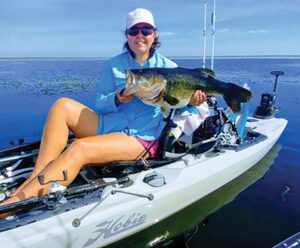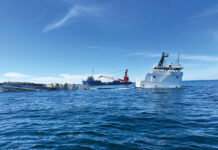 Kayaking has become one of the fastest-growing industries in the sporting world. These craft are versatile, economical, and just plain fun. In addition to providing a sport in and of itself, the kayak can be an incredible tool for better angling. Check the tips below if you have been thinking of taking the plunge.
Kayaking has become one of the fastest-growing industries in the sporting world. These craft are versatile, economical, and just plain fun. In addition to providing a sport in and of itself, the kayak can be an incredible tool for better angling. Check the tips below if you have been thinking of taking the plunge.
Cost
There’s never been a better time to buy. Kayaks have become very popular in recent years, meaning that more manufacturers are making them and prices for an entry-level kayak are even lower than they used to be. Standard kayak models start at a low of about $250, but you’ll want to spend more for a fishing kayak that comes complete with rod holders and other angling amenities – expect to pay from $300 to more than $1,000, depending on features. You’ll also be buying a double-bladed kayak paddle, which will run you $50-100 or more. Most kayaks don’t include a padded seat, and you’ll probably want one; add another $50-75. Yes, the tab is adding up pretty quickly, but for an entry-level rig you’re still well under what the cheapest jon boat and trolling motor will cost you. Smaller accessories, such as a light anchor and – of course! – a life vest, you may already own if you’re a boater.
A kayak is a very personal purchase, and you should buy from a vendor that will allow an exchange if you don’t like the way the craft fits you or how it performs in the water. Some kayak shops are near water and will let you try before you buy. Keep in mind that you’ll need a way to transport your kayak, if you can’t just throw your new purchase in the pickup and head for the lake. A good roof rack setup or trailer may cost you more than your kayak, but a kayak is still one of the most economical boating options out there.
Sit-on-top versus sit-inside
There are two basic kayak types. A sit-on-top kayak is a sealed hollow shell with molded seating on top to accommodate the paddler. It’s easy to get in or out of, a major plus if you plan to kayak-and-wade. The kayaker sits above the waterline, which increases visibility and casting distance, but leaves the kayaker exposed to waves and splashing. Storage space is mostly open to the elements, but is easily accessible. However, there will probably also be one or two watertight hatches that allow dry storage inside the kayak shell. Note the size and location of the hatch openings, as these will limit what you’ll be able to fit inside and whether you’ll be able to reach them from the kayak seat. Water that splashes into the kayak drains out through scupper holes, which can be plugged to prevent water ingress, if you’ll be on calm water.
A sit-inside kayak is self-descriptive: the paddler sits inside a cutout in the open hull. Add a waterproof apron, and the paddler is pretty well protected below the waist from waves and water. The angler is sitting at the waterline, and the lower center of gravity may provide a more stable ride but slightly limited visibility and casting distance. The open hull provides plenty of fairly dry inside storage in front of and behind the kayaker. However, this internal storage is not as easily accessible, and entering and exiting the kayak is not nearly as easy. Generally, the sit-inside design is a good choice for river or ocean kayaking. However, most stillwater anglers prefer the in-and-out convenience offered by the sit-on-top design.
Fishing Kayaks
The simplest thing that defines a “fishing kayak” is the presence of rod holders. A fishing kayak will also usually be wider than standard kayaks – around 30 inches or so – and therefore more stable. It may have extra storage features, like molded in tackle trays or even a baitwell. Note that you can add after-market rod holders to most kayaks, but you’re better off starting with a fishing kayak, mainly for the added stability. A wider kayak won’t cut through the water as quickly as a standard model, but you’ll be able to cast, set the hook and land frisky fish without feeling like you’re about to take a spill at any moment.
Length & Weight
Length is important. A longer kayak will travel faster and more efficiently (and have more storage space), but weigh more to load and carry – especially important if you’re car-topping or portaging. Twelve to 13 feet is a popular range for saltwater anglers, and will provide a roomy and stable freshwater fishing platform too. However, if portability is important, look hard at kayaks 10 feet or less in length. My 10-footer is a lightweight at exactly 50 pounds, but I’d still swear it’s half full of water when I hoist it back onto my roof racks at the end of the day. The weight is much easier to handle if you’re securing your craft to something below shoulder level, like a pickup bed or trailer. A kayak cart can also be a big help moving your boat from car to water (more on that later). Long story short, consider weight a critical factor based on how you’re transporting your kayak.

























































